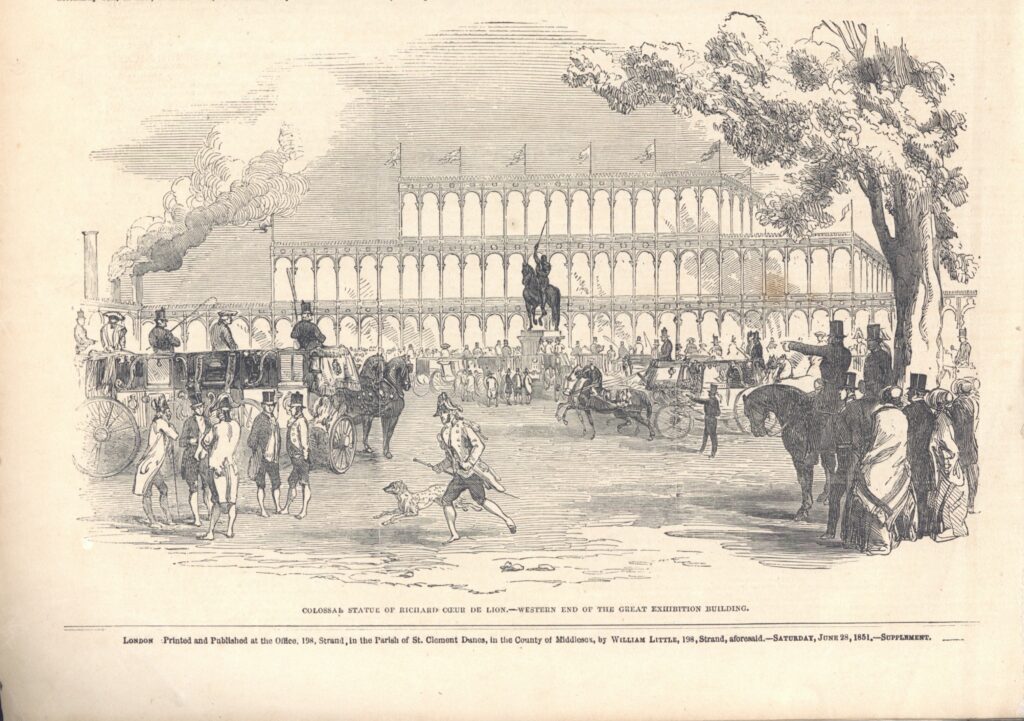On 1 May 1851 – almost exactly 170 years ago – the Great Exhibition first opened its doors to the public. Housed in Hyde Park, in the vast temporary structure that was quickly christened the Crystal Palace, the exhibition remained open until 15 October. During that time, it attracted millions of visitors, many of whom spoke in great wonderment about the bewildering array of objects from around the world that were on display there. Charlotte Brontë affirmed that the Crystal Palace was ‘a wonderful place – vast, strange, new, and impossible to describe’. The Great Exhibition was in many ways symbolic of the Victorian era, and it provided the precedent that inspired a number of universal expositions around the world throughout the rest of the nineteenth century and into the twentieth.
Central to the Great Exhibition were notions about cultural progress, and the benefits of mankind’s advance towards an industrialised society. Hence, it was an event dominated by thoughts about the future. Yet, several objects that were exhibited in 1851 prompted visitors to think not about the future, but about the past. These responded to the concern that many felt in the nineteenth century about the effects that industrialisation were having on society, and the anxiety that a number of figures felt specifically in connection to the exhibition.

Simonis’ statue of Godfrey of Bouillon, from the Illustrated London News, 10 May 1851, 32
In a new article in the Journal of Victorian Culture, I trace the influence of the Middle Ages on the Great Exhibition. In particular, I examine the appearance there of two statues of medieval figures, that of Richard I (‘the Lionheart), by the Turin-born sculptor Carlo Marochetti, and that of the First Crusader Godfrey of Bouillon by the Belgian sculptor Eugène Simonis. The former was exhibited on behalf of England, while the latter took pride of place in the centre of the Belgian display in the Crystal Palace. Both sculptures attracted interest from contemporaries. The Illustrated London News published drawings of both.

Marochetti’s statue of Richard I, from the Illustrated London News, 28 June 1851, 24
A number of visitors praised both statues as symbols of Christian devotion, nobility and chivalry – all impulses that were associated with the Middle Ages. These impulses resonated with visitors because they harkened back to a time that was viewed as simpler, safer, and more pious than the present. statues (along with other objects that connoted the past). Hence, the statues acted as stabilising anchors; tangible bulwarks against the forces of modernity that had shaped the wider exhibition. In the nineteenth century, then, just as in the early twenty first, statues mattered because they articulated ideas about the past that could shape ideas about history in the present.
Read the full research article here.
Further reading
This research has been carried out in connection to the project, ‘Contested Pasts: public monuments and historical culture in Western Europe, 1815-1930’, funded by the British Academy and Leverhulme Trust, in conjunction with the Elizabeth Barker fund. It will soon be published in the Journal of Victorian Culture as a research article entitled ‘A Crusader Duel at the Crystal Palace: The statues of Godfrey of Bouillon and Richard the Lionheart at the Great Exhibition of 1851’.
On the Great Exhibition, see in general John R. Davis, The Great Exhibition (Stroud: Sutton, 1999). For Brontë’s reaction to the Crystal Palace, see Geoffrey Cantor, ‘Emotional Reactions to the Great Exhibition of 1851’, Journal of Victorian Culture, 20 (2015), 230-45, at p. 231. On the anxieties unleashed by the exhibition, see Cantor’s Religion and the Great Exhibition of 1851 (Oxford: Oxford University Press, 2011).
Both editions of the ILN were consulted and photographed at Swansea University’s Singleton Park library in March 2021.
